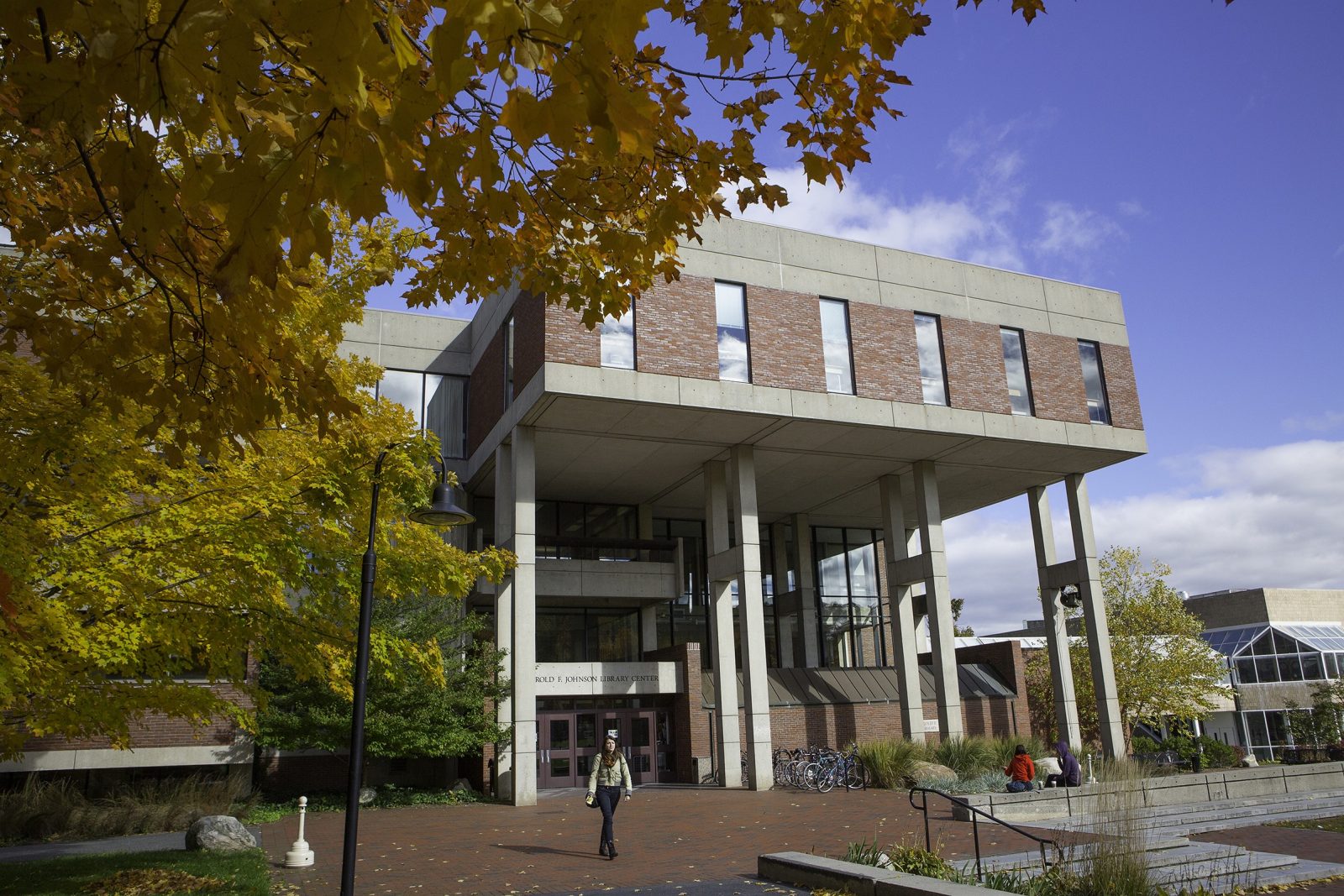Located at the center of the Harold P. Johnson Library, the Hampshire College Art Gallery is a hub for art and creative expression and has been since Hampshire admitted its first students in 1970. The Gallery spans approximately 2,000 square feet at the base of a dramatic central atrium and offers a versatile platform for presenting visual arts and transdisciplinary installations and exhibitions in the heart of Hampshire’s campus.
Mission
In alignment with Hampshire College’s commitment to disruption and innovation in education, the Gallery presents exhibitions featuring artists whose work engages experimental forms of making and explores relevant topics to our campus community. The Gallery is a dynamic space for contemporary art and collections-based exhibitions, uniting innovative curatorial approaches with a focus on teaching and learning. Projects often merge questions from the humanities, the sciences, and social inquiry to explore contemporary issues through an interdisciplinary lens. In addition to working with exciting regional, national, and international artists, we are committed to supporting students in the rigorous curatorial development of Division III thesis exhibitions.
Our Collection
Hampshire College has a small, eclectic permanent collection, an eclectic mix centered upon donations from the College’s opening. This has resulted in a rich assortment of ’60s and ’70s artworks, echoing the era of the College’s beginnings. Notable works include Larry Bell’s glass cube, Anuskiewicz’s “op art” paintings, a bronze sculpture by Leonard Baskin, and Paul Zelansky’s resin abstract sculptures.
Photography also holds a significant place in the collection, which features extensive portfolios by artists such as Paul Strand, Manuel Álvarez Bravo, Edouard Boubat, Robert Dousneau, Elliott Erwitt, and Jerome Liebling. The collection has slowly grown with limited acquisitions since 2005, such as the Vance Studley Collection of Barry Moser prints.
The collection has notable strengths among works on paper. These include a two-volume portfolio entitled Formulation: Articulation by Josef Albers, a suite of lithographs by Marisol, and abstract prints by Man Ray. Individual works on paper (for example, Baskin, Gropper, Grosz) are useful as illustrations of various printmaking and drawing techniques.
One unconventional segment of the collection is the Robert W. Lisle Collection of cameras, darkroom equipment, projectors, and daguerreotype and collodion photographs that provide a material record of the history of image capture in the United States from the mid-19th century to the early 21st century.
Additional collection highlights include about 100 Asante goldweights (small brass tools for measuring gold dust on scales from the late 17th to 18th centuries), a dozen Yoruba ibeji (wood figurative sculptures), and a group of USSR political posters.
Five College Museums Database
This searchable database contains information about catalogued objects from the collections of seven museums in the Pioneer Valley of Massachusetts: the Mead Art Museum at Amherst College, Hampshire College Art Gallery, Historic Deerfield, Mount Holyoke College Art Museum, Joseph Allen Skinner Museum of Mount Holyoke College, the Smith College Museum of Art, and the University Museum of Contemporary Art at the University of Massachusetts, Amherst. This working database is constantly updated as new information becomes available. Not all records have images, nor have they been recently reviewed by curatorial staff; some may require revision. A small percentage of the museums’ collections are not currently searchable online.
Friends and Neighbors
The Hampshire College Art Gallery is a member of Museums10, a collaborative of ten museums that inspire, engage, and enrich their communities through shared experiences of art, literature, history, and the natural world. Other members include the Beneski Museum of Natural History, the Emily Dickinson Museum, the Eric Carle Museum of Picture Book Art, Historic Deerfield, the Mead Art Museum at Amherst College, the Mount Holyoke College Art Museum, the Smith College Museum of Art, the University Museum of Contemporary Art, and the Yiddish Book Center.


